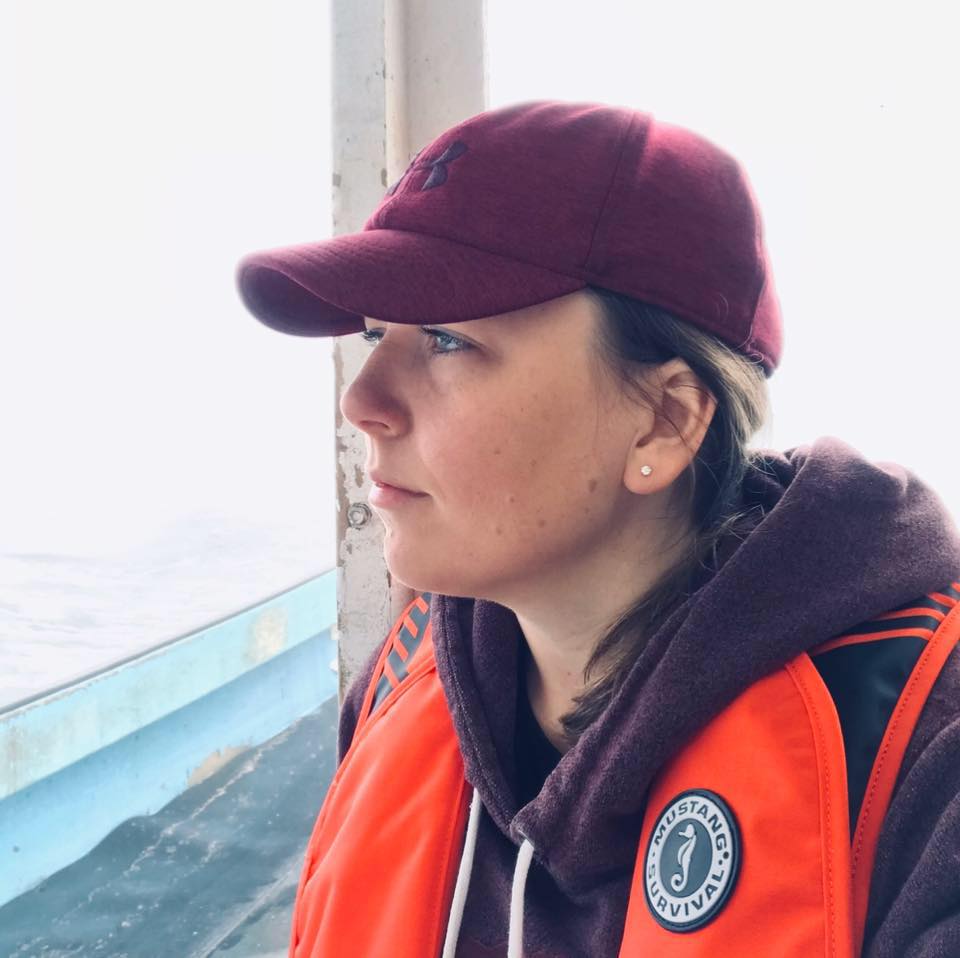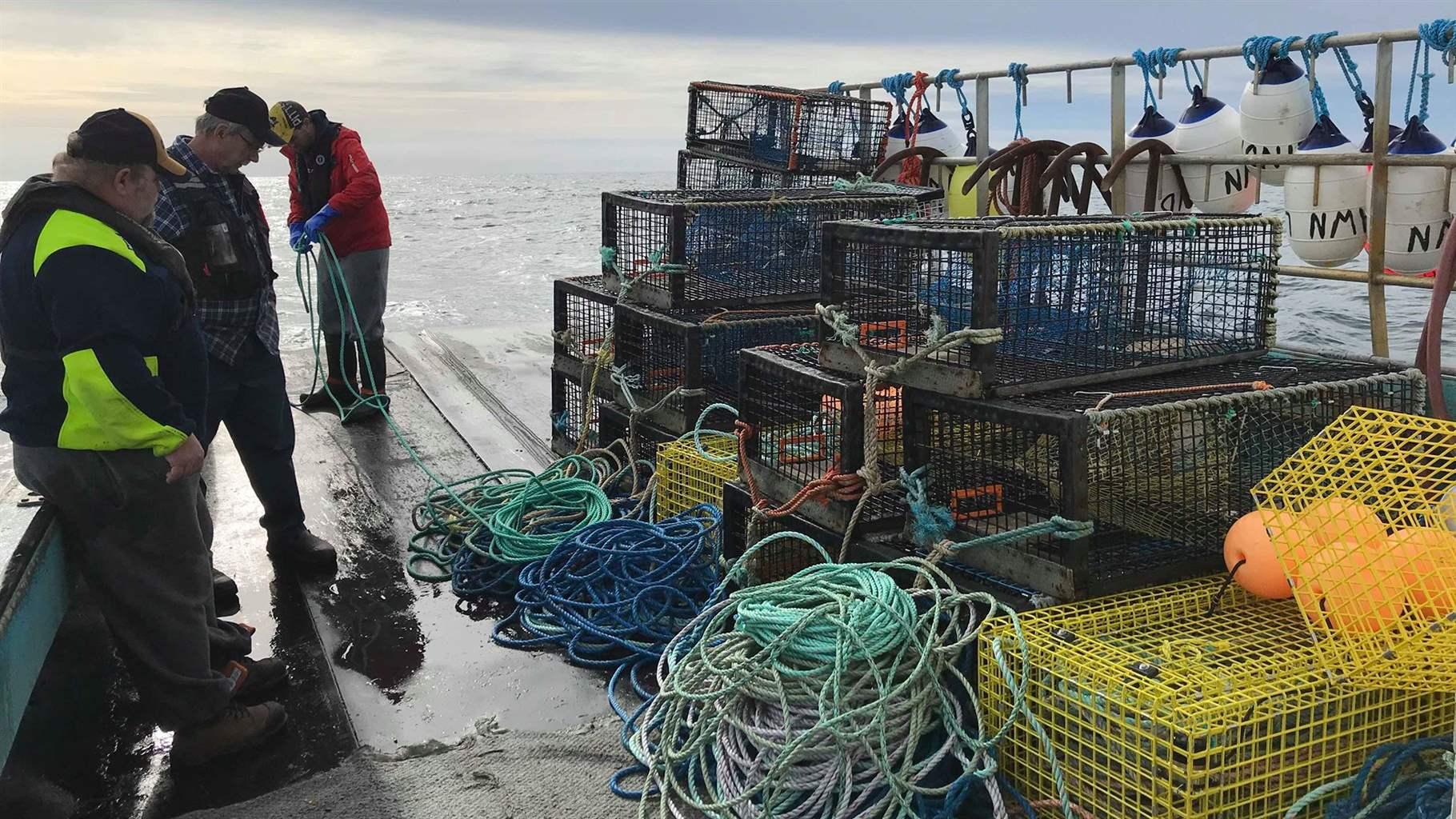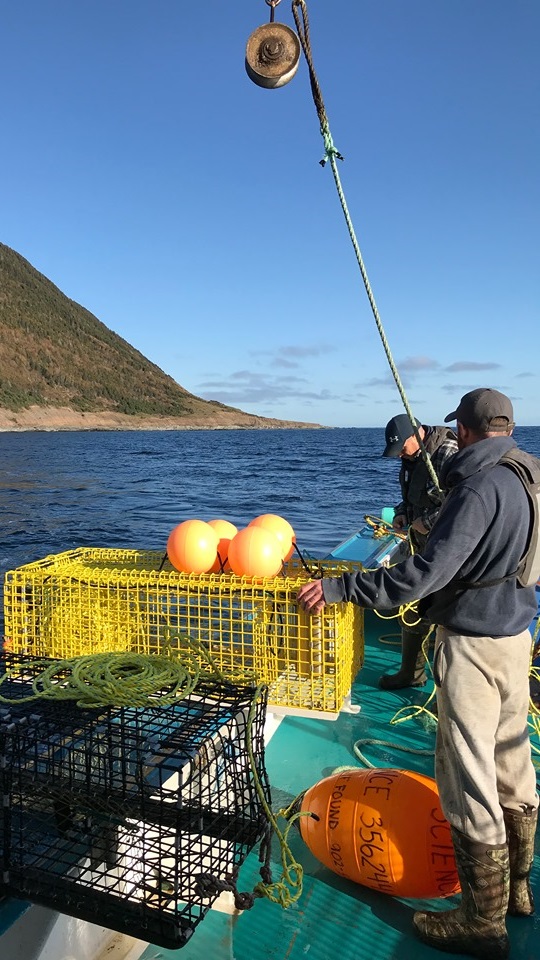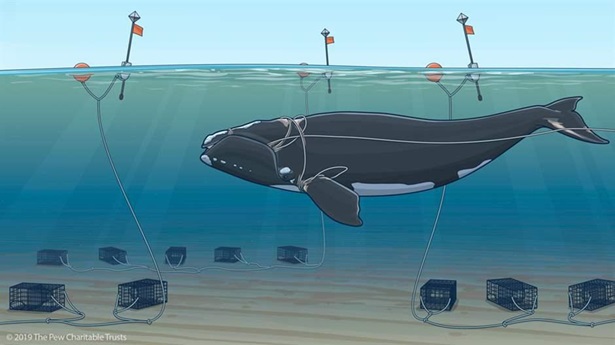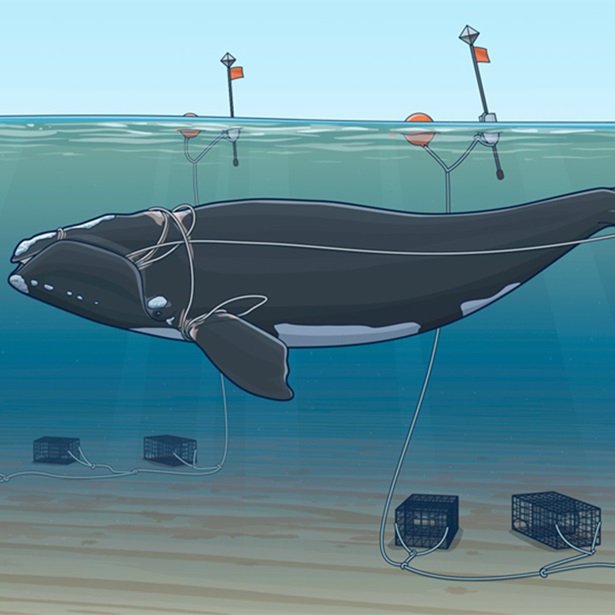Fishing Industry and Others Look to Gear Innovations to Reduce Whale Deaths
Ropeless traps and other technology show promise but challenges remain, Canadian experts say
Lobster and crab fishing are a core part of the Canadian maritime culture and economy. But the lines that run between surface buoys and lobster and crab traps cause unintended entanglement of marine mammals, including North Atlantic right whales. These cetaceans, which live off the Canadian and U.S. east coasts, number only around 400 and face other threats as well, including injury and death from ship strikes.
But promising innovations in lobster and crab gear could reduce whale entanglements while still sustaining local economies and traditional cultures. To learn more, Peter Baker, who directs The Pew Charitable Trusts’ work on this issue, spoke with Sean Brillant, senior conservation biologist with the Canadian Wildlife Federation, and Elizabeth Baker, fisheries engagement specialist with the federation. This interview has been edited for clarity and length.
Q: Tell us about right whales and some of the threats they face.
Brillant: They spend probably half the year in Canada and half in the U.S. I say “probably” because we have only 30 to 40 years of observing right whale behavior. These animals likely live to 60 or 80 or more years so we don’t have all the answers.
We know that they come to Canadian waters during the summer and fall, and for decades they came to the Bay of Fundy. But in 2010, we went looking for them, and they weren’t there. It wasn’t until 2015 that we confirmed that they changed location to the Gulf of St. Lawrence. This change put them in conflict with a lot of different ocean industries.
Q: What has the Canadian government been doing to reduce the risks to whales?
Brillant: Prior to 2017, Canada had a poor record for protecting right whales, and the scientific and conservation community made sure that the government knew it. After we discovered the relatively large population of right whales in the Gulf of St. Lawrence—and increased mortality because of entanglements and ship strikes—the government closed areas to fishing and imposed speed restrictions on cargo vessels transiting through the area. They even closed the crab fishery several weeks early, before the quota had been met. Since 2018, the government has adopted rules to reduce the risk of ship strikes and entanglements, including mandatory requirements for reporting lost gear. The government also increased funding its marine mammal response program so specialists have the resources necessary to help entangled whales.
Q: How did the fishing community respond to the early closure of the crab season?
Brillant: Strongly and immediately! The government recognized the need to maintain a sustainable coastal fishery and to ensure human activities in the ocean are not causing the extinction of the North Atlantic right whale. This affects many people’s livelihoods. There’s a lot of culture, tradition, and history around these fisheries, and they are a backbone of the economy in Atlantic Canada. There is a need to solve this problem, because people want to be able to fish and no fisherman wants to see whales suffering or hurt by their gear. Many affected fisheries became very engaged in the discussions about solutions and some initiated their own studies on new, potentially safer gear.
Q: What new gear is available to reduce entanglement?
Baker: There are a few different things that are either being employed or in testing, such as weak ropes. A recent study showed that rope with a breaking strength of 1,700 pounds or less may reduce risk because the whales can break free more easily. These new ropes are being tested on the vertical lines that attach the trap to the surface buoy. Another new technology being explored is ropeless systems, in which fishermen use remote controls to deploy buoys from the seafloor to the surface, and then retrieve their traps.
In Canada, we’ve seen industry actually leading the initiative when it comes to testing ropeless gear. It’s very encouraging to see this, but it is no small feat, and it can’t be accomplished by any one organization, group, or government. We are building more collaboration and cooperation among all interested partners.
Q: What are some obstacles to adopting these technologies?
Baker: Anytime you ask fishermen to change what they’ve been doing for generations, there’s going to be some resistance. But in testing these technologies, we are working with fishermen from the get-go so that we can find ways to benefit the fishermen and the whales.
Brillant: Ropeless technology is relatively new. As recently as five years ago, ropeless gear was considered science fiction. In the past three years, this has changed, in part because fisheries closures are now becoming more common. The Gulf of St. Lawrence and the Bay of Fundy have fishery closures. In the U.S., Massachusetts Bay is closed in late winter and early spring and the Dungeness crab fishery off California now has seasonal closures because of whales that are coming into the area of the fishery. So now the use—and value—of ropeless gear is a real deal. Fishermen are being excluded from areas of the ocean and the only option they have is if new technology can be developed that allows for the protection of right whales.
Q: How is policy making a difference?
Brillant: The 2019 passage of the Canadian Fisheries Act is making a difference and, even more importantly, I would suggest that the U.S. Marine Mammal Protection Act import law that came into effect in 2016 is causing many changes. Under this new rule, seafood exports from Canada into U.S. markets must demonstrate that they meet U.S. bycatch limits, including reductions in right whale entanglements in crab and lobster fisheries.
Q: What do you think of the future of ropeless gear, and what more needs to be done to protect right whales?
Brillant: As I mentioned previously, we’re not talking about science fiction anymore; the development of new technology and new ways of fishing is something that is long overdue. With new measures in place, supported by the precautionary approach and by science, we had no right whale deaths in 2018. But then in 2019, despite minor changes to management efforts used in 2018, we had nine dead whales in Canada, and a 10th show up in U.S. waters that was entangled in Canadian fishing gear. Clearly, we need further action and preventative measure to find a way to co-exist with these animals.
